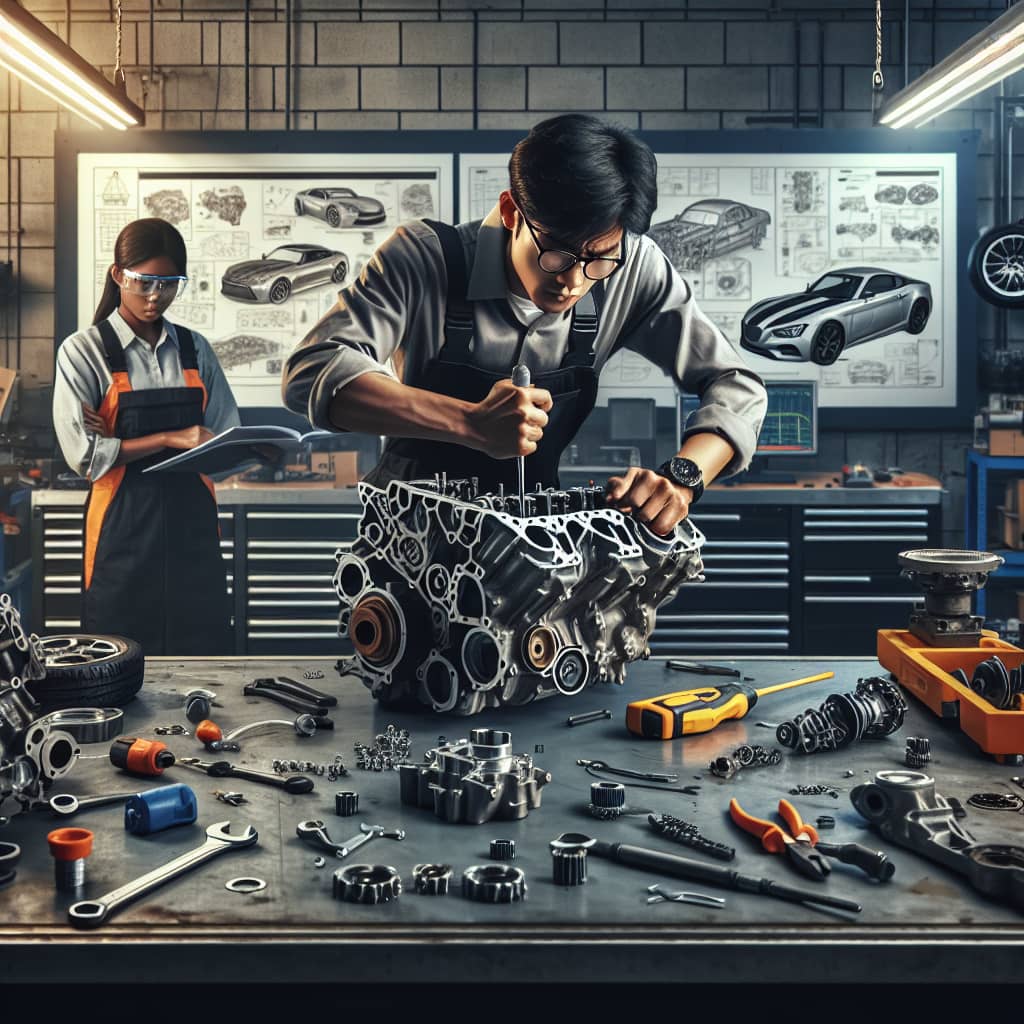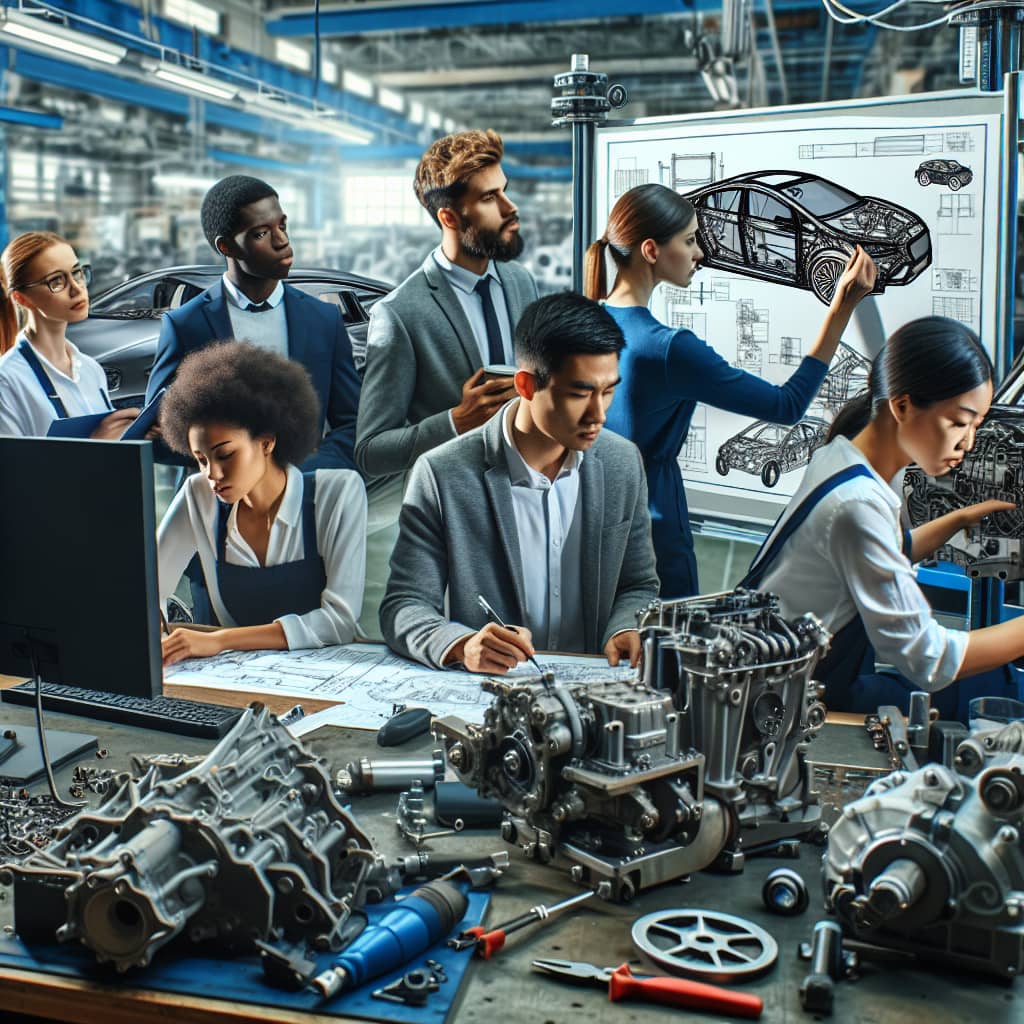Vehicle Propulsion Systems
Automotive engineering is heavily focused on developing propulsion systems that power vehicles efficiently and sustainably. With the growing emphasis on environmental sustainability and reducing carbon emissions, engineers are increasingly turning to alternative propulsion technologies such as electric and hybrid powertrains. The development of electric vehicles (EVs) involves designing high-performance batteries, electric motors, and power electronics to deliver optimal range and performance while minimizing environmental impact. Hybrid vehicles combine internal combustion engines with electric propulsion systems to achieve improved fuel efficiency and reduced emissions. Additionally, advancements in hydrogen fuel cell technology offer promising alternatives for zero-emission transportation.
Safety Features and Crashworthiness
Safety is a paramount concern in automotive engineering, and engineers are continually developing innovative safety features to protect occupants and pedestrians in the event of a collision. From passive safety features such as seat belts, airbags, and crumple zones to active safety systems like anti-lock braking systems (ABS), electronic stability control (ESC), and collision avoidance systems, engineers employ a multi-layered approach to enhance vehicle safety. Crashworthiness, which refers to a vehicle’s ability to protect occupants during a crash, is a key focus area in automotive engineering. Engineers utilize advanced materials and structural design techniques to improve crashworthiness and mitigate the impact forces experienced by occupants in a collision.
Sustainability and Environmental Considerations
With increasing concerns about climate change and environmental sustainability, automotive engineering is undergoing a paradigm shift towards eco-friendly and sustainable solutions. Engineers are exploring alternative fuels, lightweight materials, and aerodynamic design principles to reduce vehicle emissions and improve fuel efficiency. The development of eco-friendly manufacturing processes and recycling initiatives further underscores the industry’s commitment to sustainability. Additionally, life cycle assessments and environmental impact analyses play a crucial role in guiding design decisions and ensuring that vehicles have minimal ecological footprints throughout their lifecycle.
Connectivity and Autonomous Driving Technologies
The automotive industry is undergoing a digital transformation driven by advancements in connectivity and autonomous driving technologies. Automotive engineers are at the forefront of developing connected vehicle systems that enable seamless communication between vehicles, infrastructure, and external devices. These systems facilitate features such as real-time traffic information, remote diagnostics, and over-the-air software updates, enhancing the driving experience and improving vehicle functionality. Autonomous driving technologies, including adaptive cruise control, lane-keeping assistance, and fully autonomous driving systems, represent the future of mobility. Automotive engineers are working to overcome technical challenges and regulatory hurdles to bring autonomous vehicles to market, revolutionizing transportation and urban mobility.
Challenges and Opportunities
Addressing Environmental Concerns: One of the most pressing challenges facing automotive engineers is mitigating the environmental impact of vehicles. With increasing regulatory pressure to reduce emissions and combat climate change, engineers must develop innovative solutions to make vehicles more fuel-efficient and eco-friendlier. This includes advancements in propulsion technology, such as electric and hydrogen fuel cell vehicles, as well as improvements in aerodynamics, lightweight materials, and sustainable manufacturing practices. By embracing these challenges, automotive engineers can drive positive change and shape a more sustainable future for transportation.
Meeting Consumer Demand for Advanced Features
Today’s consumers expect vehicles to offer not only superior performance and safety but also advanced features and connectivity options. Automotive engineers must balance the demand for cutting-edge technologies with the practical considerations of cost, reliability, and usability. This requires a deep understanding of consumer preferences, market trends, and emerging technologies to develop innovative solutions that meet and exceed customer expectations. By staying attuned to consumer needs and preferences, automotive engineers can capitalize on opportunities to differentiate their products and gain a competitive edge in the market.
Navigating Regulatory Landscape
Automotive engineering is subject to a complex regulatory landscape governed by stringent safety, emissions, and performance standards. Engineers must ensure that vehicles comply with regulatory requirements imposed by government agencies and industry organizations across different regions and markets. Navigating this regulatory landscape requires a comprehensive understanding of applicable laws and standards, as well as the ability to adapt quickly to evolving regulations. By proactively addressing regulatory compliance issues, automotive engineers can mitigate risks and ensure that vehicles meet the highest standards of safety, quality, and environmental responsibility.
Embracing the Shift Towards Electric and Autonomous Vehicles
The automotive industry is undergoing a transformative shift towards electric and autonomous vehicles, presenting both challenges and opportunities for automotive engineers. Electric vehicles (EVs) require specialized expertise in battery technology, electric powertrains, and charging infrastructure, as well as considerations for range, performance, and cost. Similarly, autonomous driving technologies require advanced sensor systems, artificial intelligence algorithms, and robust safety mechanisms to enable fully autonomous operation. By embracing these emerging technologies and investing in research and development, automotive engineers can help accelerate the adoption of electric and autonomous vehicles, paving the way for a new era of mobility and transportation.
The Future of Automotive Engineering
Trends Shaping the Future of Transportation: Automotive engineering is at the forefront of shaping the future of transportation, driven by several key trends. One prominent trend is the electrification of vehicles, with an increasing number of automakers investing in electric powertrains and battery technology to reduce emissions and dependence on fossil fuels. Another trend is the rise of autonomous vehicles, which have the potential to revolutionize mobility by improving safety, efficiency, and accessibility. Additionally, connectivity and digitalization are transforming vehicles into connected platforms that offer a wide range of services and functionalities, from infotainment and navigation to remote diagnostics and over-the-air updates. By embracing these trends, automotive engineers can help create a more sustainable, efficient, and user-centric transportation system for the future.
Potential Innovations on the Horizon
The future of automotive engineering holds exciting possibilities for innovation and advancement. Engineers are exploring novel technologies and concepts such as solid-state batteries, wireless charging, and advanced driver assistance systems (ADAS) to enhance the performance, safety, and user experience of vehicles. Moreover, advancements in materials science, artificial intelligence, and robotics are opening up new avenues for design optimization, manufacturing efficiency, and autonomous operation. From flying cars and urban air mobility to hyperloop transportation systems, the future of automotive engineering promises to be characterized by bold ideas and groundbreaking innovations that redefine the way we think about transportation.
Role of Automotive Engineers in Shaping Tomorrow’s Vehicles
As stewards of innovation and technology, automotive engineers have a critical role to play in shaping tomorrow’s vehicles. By leveraging their expertise in engineering, design, and technology, engineers can drive progress and push the boundaries of what is possible in automotive engineering. This includes developing sustainable propulsion systems, enhancing vehicle safety and autonomy, and creating connected and intelligent transportation solutions. Moreover, engineers have a responsibility to consider the broader societal implications of their work, including environmental sustainability, social equity, and accessibility. By working collaboratively and ethically, automotive engineers can help create a future where transportation is safer, greener, and more inclusive for all.…


